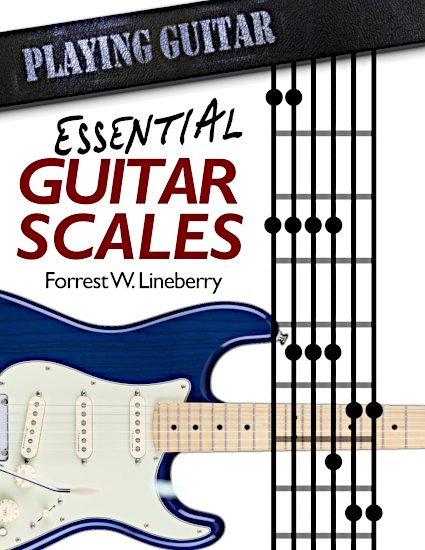Pentatonic Scale
The arpeggio is the bridge between harmony (playing chords) and melody (playing single note lines). The bridge between the arpeggio and the major scale is the pentatonic scale. PENTATONIC means five notes. Technically, any five-note scale can be called a pentatonic scale, and there are many different pentatonic scales that have been used throughout history all over the world. In the West, however, the most common pentatonic scale is built by stacking four perfect 5ths from a given root. From G, this would give us:
G — D — A — E — B
Arranged in pitch order from low to high, we get:
G — A — B — D — E
This is known as the major pentatonic scale. Comparing this scale to the seven-note (heptatonic) major scale reveals that the pentatonic scale is missing the 4th degree and the 7th degree:
G — A — B — X —D — E — X
G — A — B — C — D — E — F♯
The absence of the 4th and 7th degrees gives us a scale with no half steps. The term for this is ANHEMITONIC That’s a $10 word that breaks down to an (not or without), hemi (half), and tonic (tone or what we call step). What this means to us is that the major pentatonic scale sits between the sparse sound of an arpeggio and the more complex sound of the heptatonic scale, The lack of half steps allows for playing the notes in any order or rhythm without sounding “bad” or like you’ve played a “wrong” note. It’s for this reason that wind chimes are often tuned to pentatonic notes. The notes and rhythm can be completely random and still sound musical. This makes the pentatonic a great starter scale for constructing melodies and solos.
The interval formula for major pentatonic is 1 2 3 5 6. This can be seen on the fretboard as the major scale with two notes missing or as a major arpeggio (R 3 5) with two notes added (2 6). To construct the scale around the CAGED shapes all we have to do is add the 2nd and 6th to each arpeggio::






The Major Scale
Once we have the pentatonic shapes established, All we have to do is add the remaining two notes to get the heptatonic major scale:






The CAGED system is a sound approach to organizing the fretboard. And, though we’ve only looked at major chords and major scales, the system can be used to organize any chord type or scale type. Basing the arpeggio and scale shapes directly off the chord shapes makes the CAGED approach well-suited for playing melodic ideas around chord tones and transitioning smoothly between playing chords and playing lead lines or riffs. The main drawback to this system Is that most of the patterns require you to move your hand down one fret from the position established by the chord, itself, in order to play the arpeggio and scales. This is done to avoid having to stretch the fingers beyond a four-fret span. While this isn’t necessarily a bad thing by itself, it does tend to encourage a player to keep their fretting hand in a closed position and grip the neck like they might hold a baseball bat, This hand position can limit mobility and range on the fretboard making certain types of things difficult or impossible to play. To compensate for this, CAGED players tend to scoot around the fretboard into comfortable hand positions while playing melodic lines,
Each of the following approaches utilize stretching the fingers to reach the notes:

Book Title
Essential Guitar Scales
The scales you need, how to learn them, how to practice them, how to USE them.
Sell Link
Coming in early 2020!
Sample Chapter Links
Sample Chapters

